Day: 7 (Lourmarin, Roussillon, Gordes & Avignon)
Km travelled: 205km
Steps: 14, 223
September 13th 2017
There are 155 French villages that have the honor of being classified as one of the ‘Plus Beaux Villages de France”. The Vaucluse department (the area of Provence-Alps-Cote d’Azur in which Aix-en-Provence is located) boasts 7 of these villages. Today, visited 3 of them: Lourmarin, Roussillon & Gordes.
I’ve vowed during the course of this adventure to do things that are out of my comfort zone. First on the list: an organized tour of ‘Les Villages Perchés” in Provence. Now, this might not seem like something that would be considered out of the box per say, but for anyone who knows me well, knows that it is for the following reasons: 1) I do not care for anyone telling me what to do, including what to visit and for how long. 2) I’m not a fan of polite small talk with strangers and 3) I don’t like spending more money then what I had budgeted (ok, ok, that one might be a slight exaggeration, but still…). That being said, I knew that I only had a very short time is this magical region and I would not be able to get to all those places on my own. I bit the bullet, walked in to the tourist office and signed up for a tour! And then I was promptly told that no one else had signed up for said tour, therefore neither could I. I had specifically chosen that tour because it included a visit to one of my favourite wineries, Chateauneuf du Pape. Oh well, I was learning to go with the flow and to be more flexible. I picked another tour that looked interesting. Once again, I was told that particular tour wasn’t running. Hmm. Where were all the tourists? Why was no one signing up for these tours? Was I right all along and this wasn’t a good idea? I finally settled on one of the only tours that was running: Provence et les villages perches. Great. I knew nothing of these villages. The only part that was mildly interesting to me at this point was a planned visit to Avignon, the famed city of popes. However, I remembered a story that someone had told me just before my departure a few weeks ago about stumbling upon an impromptu parade after an accommodation mix-up and embracing the spontaneity & unknown aspect of it instead of dwelling on the original problem. I vowed to try to do the same and keep my mind open to the possibilities, which for me, do not always come easy.
The next day, I boarded the tour van with 8 strangers: 3 older couples, from Germany, England & the US; a solo female traveller from Germany and our local tour guide, a charismatic and knowledgable Marseillais. We set off sharply at 8am to the first village on our list of Les Plus Beaux Villages de France: Lourmarin. To get there, we crossed parallel to the Pont Julien, a roman stone arch bridge that up until 2015, had been in continual use for over 2000 years!
Lourmarin is a small village of less than 1200 inhabitants. This quiet community has been settled for over 100- years and as such boasts some famous sons: most notably, Albert Camus who spent his final years there and now rests eternally within its soil. Another notable writer, Peter Mayle (A Year In Provence) now calls Lourmarin home.
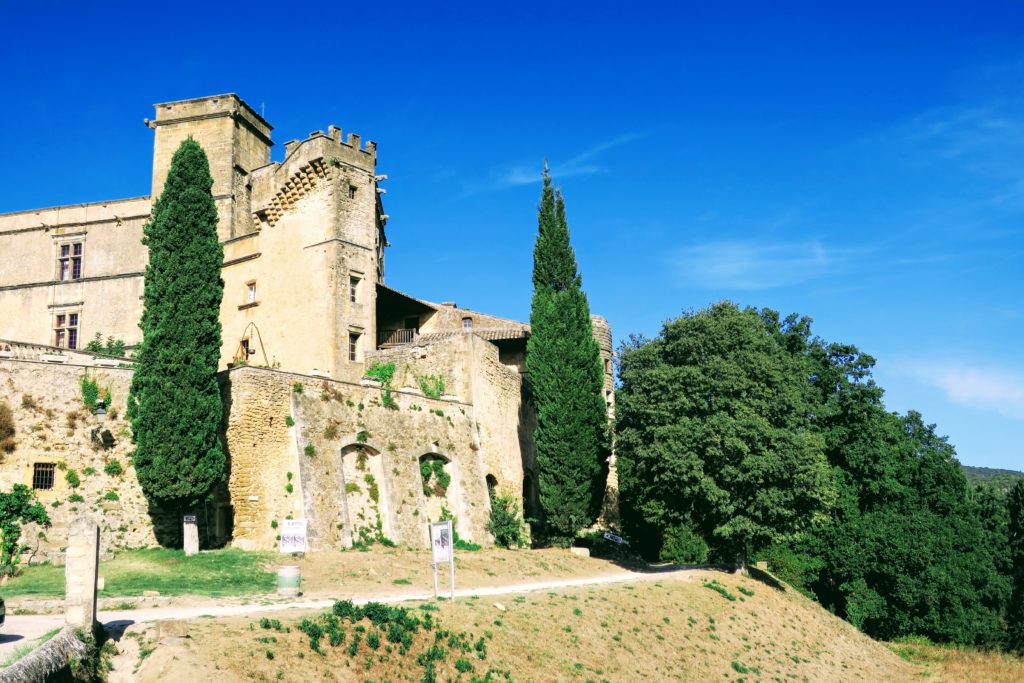
I spent an hour wandering the medieval streets, at some point so narrowed and low that I was actually required to crouch to make my way to the other side. Brightly coloured shutters adorned all the buildings like multicoloured jewels simmering in the morning sun. A stark contrast with the stone-walled and clay roofed buildings.
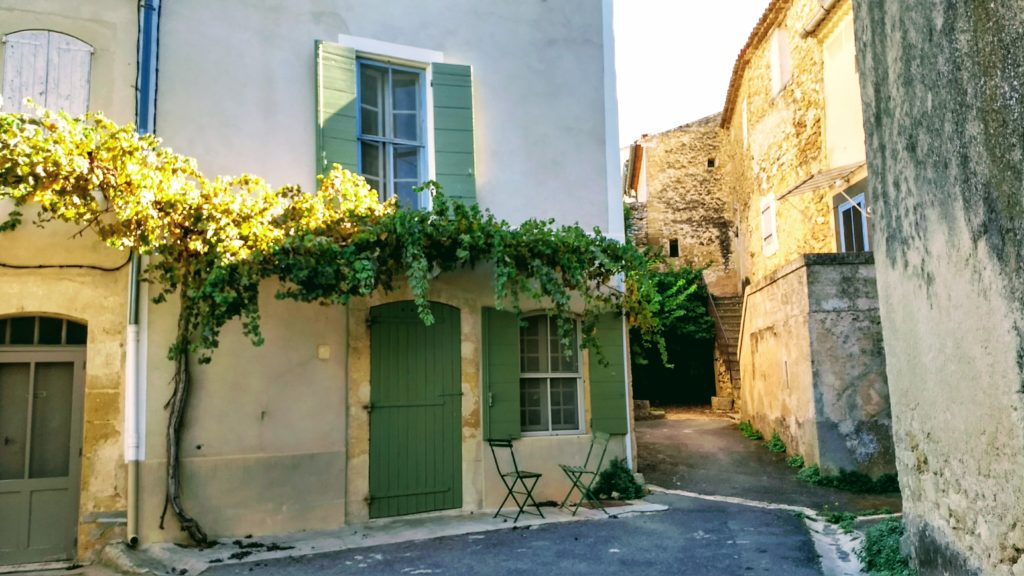
A journalist for The Telegraph recently wrote that the pull of Provence was like a powerful impulse to be out among olive trees, lavender and vineyards. It’s an urge to experience clear light pouring from a vast sky, to wander rocky, herby landscapes, and to drink wine under the stars without the need for a cardigan’. This was never more evident than when driving through the countryside on our way to our next location., Roussillon (#2 of Les Plus Beaux Villages de France). The landscape was exactly how I pictured it; Napoleon’s plane trees carving a path through vineyards and orchards thick with fruit, nestled amongst the white limestone hills. The soil, earthy and rich, a perfect combination for producing some of the world’s best wines. Roussillon, however, stands as a stark contrast to this.
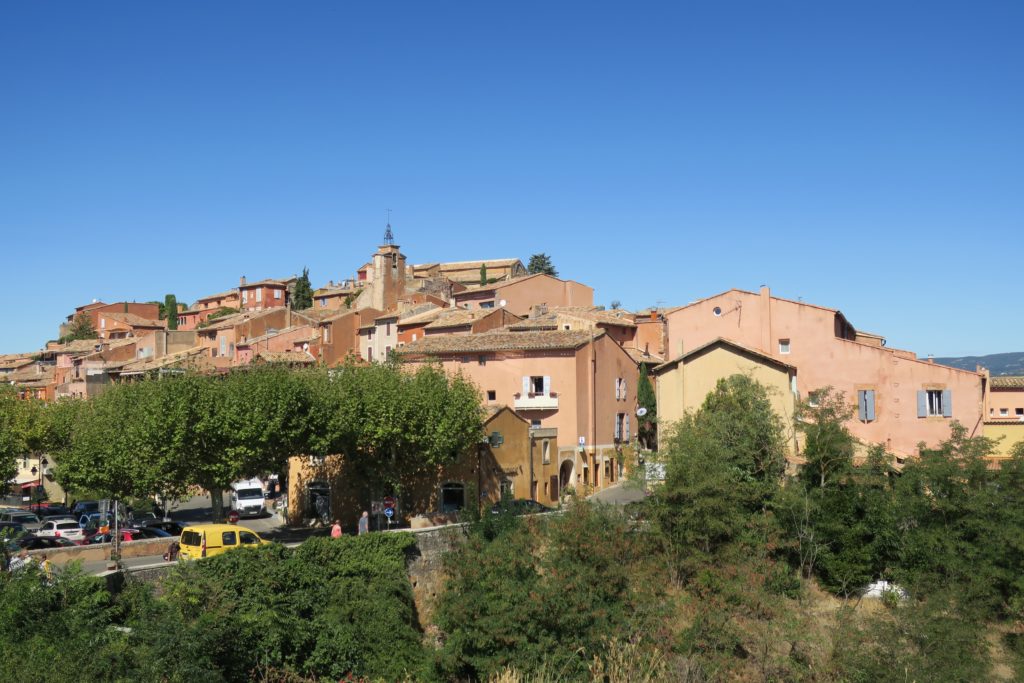
Roussillon is red. Like if a drop of red dye in water, its ripples spreading the colour in all directions. The buildings themselves appear to imbibe the colour directly from the ground, taking out rich warm tones that draw you in.
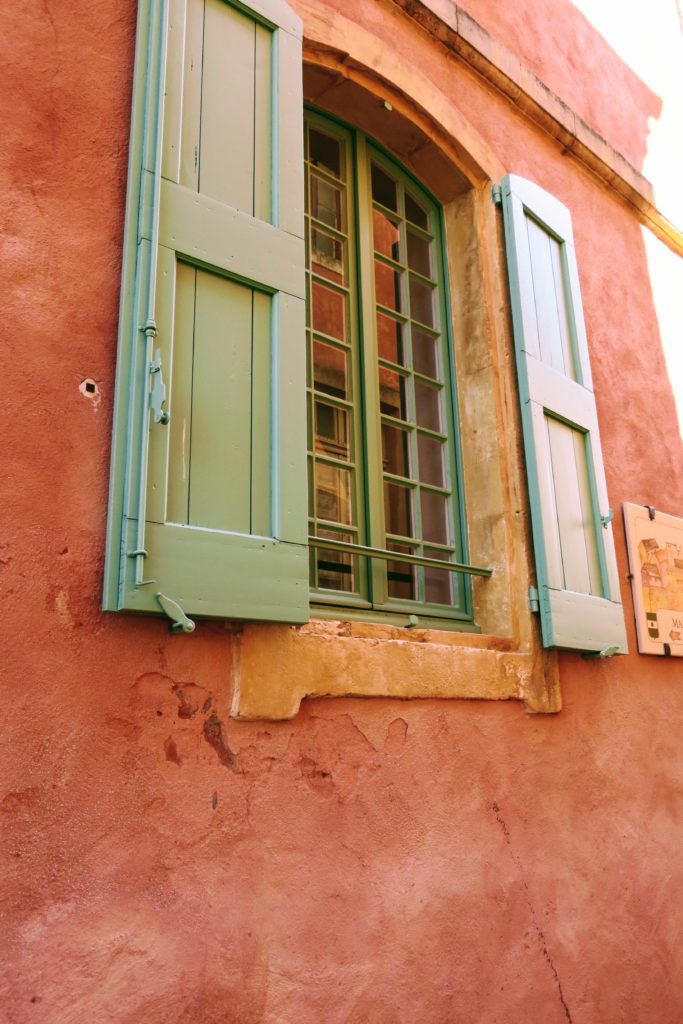
While the legend of Lady Sirmonde (https://frenchmoments.eu/roussillon/) offers an enticing and tragic story behind the famously red clay soil, the truth is slightly less exciting: the soil is rich in ochre pigment. The pigment was mined heavily and remains popular amongst local artists who continue to use today.
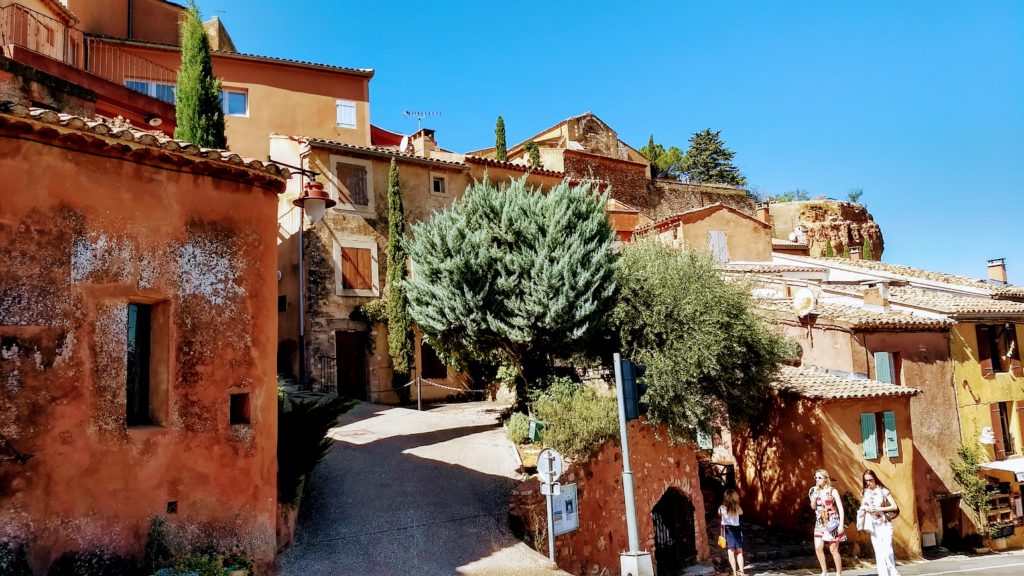
Perched atop a steep cliff, Roussillon did not disappoint with spectacular views.

As the sun increasingly warmed our skin, it was time to pay a visit to the third beautiful village on our list: Gordes. This ancient Roman city rose in front of us, seemingly carved into the rocky cliff itself.
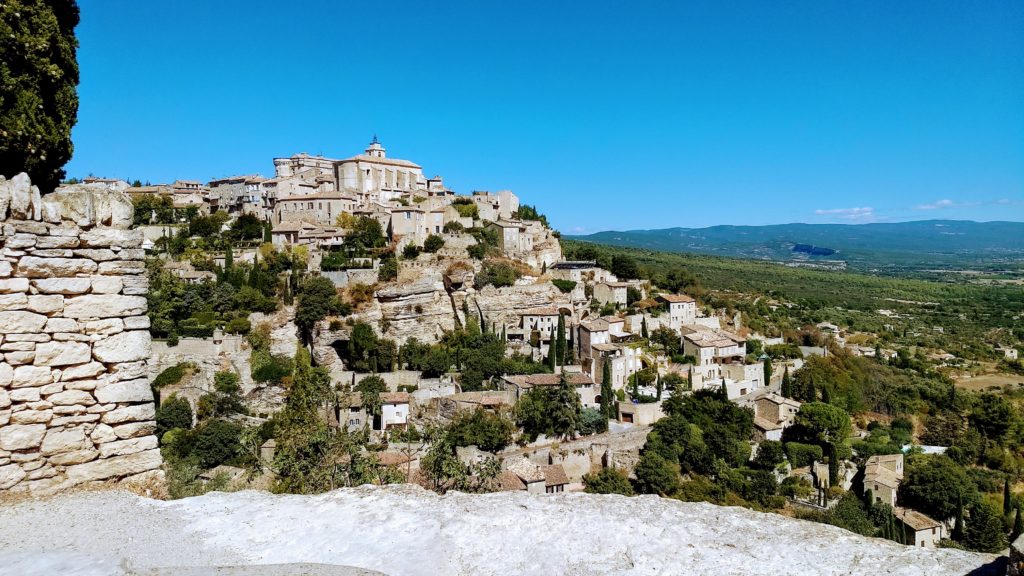
I wandered the tiny streets which climb up and up between tall rocky houses. Buildings with terracotta roofs. Dry-stone walls and fences (stone stacked without the use of mortar) lining the path to wonderful discoveries.
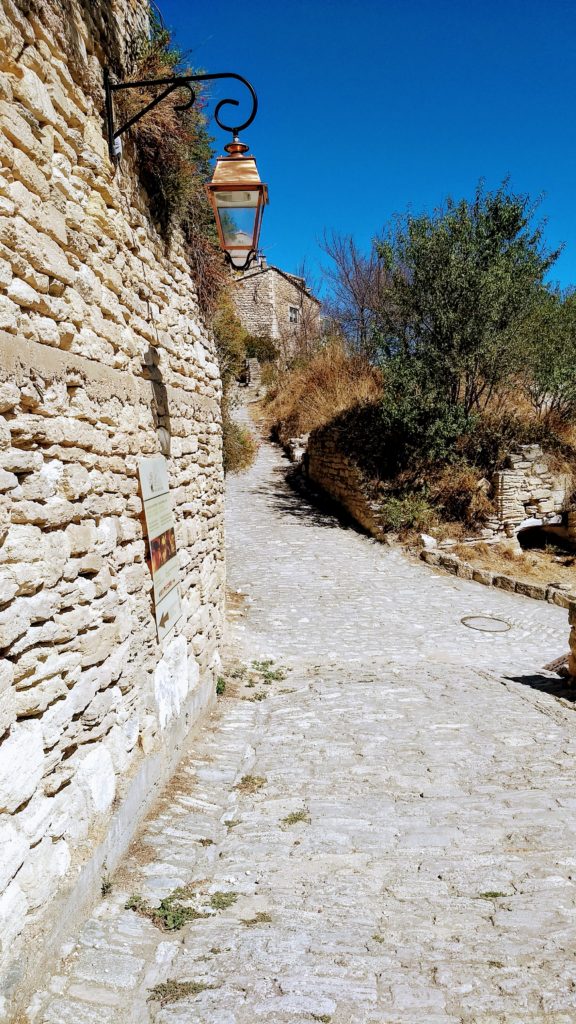
A must see stop is the 18th century church, St Firmin. Weathered paint and chipped stone betray its age and allude to the rich and deep history of the place, making it feel authentic and real.
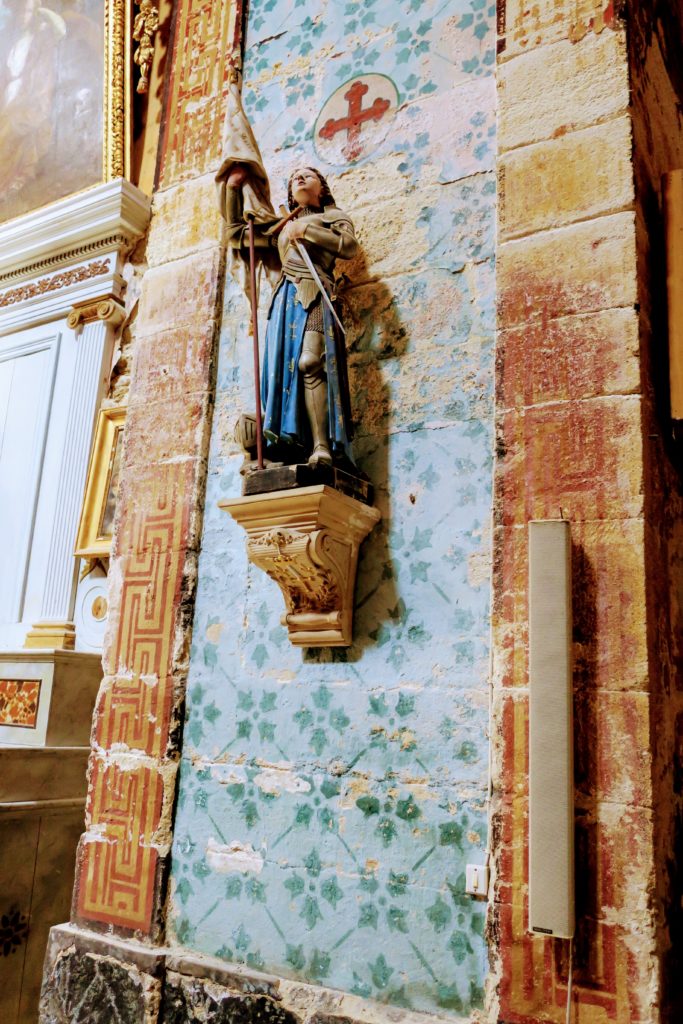
After a quick lunch of a mozzarella and tomato sandwich (on a baguette, my go-to these days!), it was time for our final and most anticipated stop of the day: Avignon. European history has long-held a special place in my heart (and library!) and I was looking forward to exploring the famed Palais des Papes. The Great Schism is a fascinating period in not only the history of the catholic church but in European history as well. Built in the early part of the 13th century, this gothic castle became the official papal residence when Pope Clement V fled Rome in 1305. Now a UNESCO World Heritage Site, it remains one of the largest and most important medieval Gothic buildings in all of Europe. This fortress, imposing both in stature and significance, dominates the city centre. When conjuring images of a gothic castle, this is exactly what you would picture. Although stripped of its contents long ago, a visit inside is still rewarding and revealing of an important chapter in catholic history.
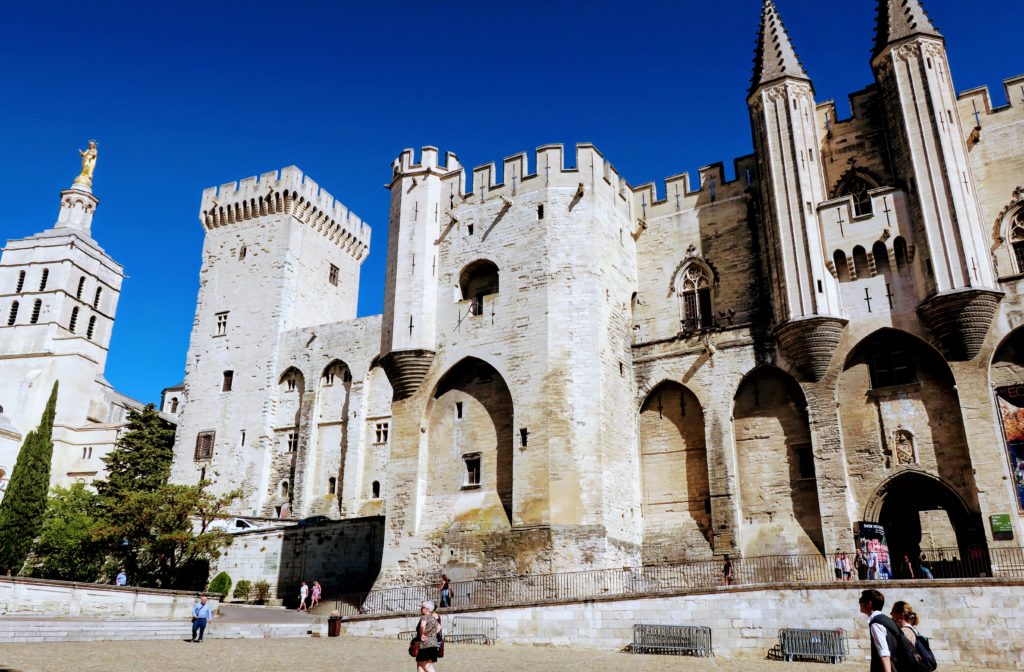
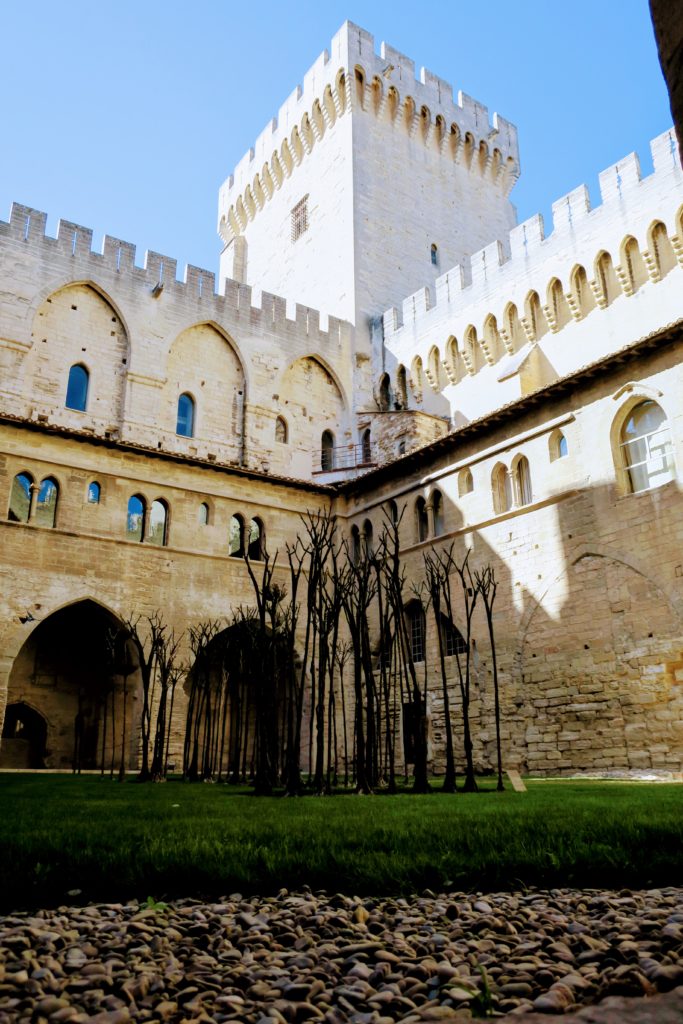
No trip t Avignon would be complete without seeing the famed “Pont d’Avignon”. While there was no dancing on the bridge that night, the sight of the famed bridge still evoked fond childhood memories.

Before heading back to Aix, Provence had one more secret to divulge: the difference between lavender and lavandin. When you Google ‘Provence’, one of the first five photos pulled up are of fields of lavender. Fine lavender only grows in Provence and it grows wild. Known for its medicinal benefits (it can treat anything from cuts, burns, headaches and even improve sleep), it has been cultivated in the region for centuries. Any other region in the world that claims to cultivate fine lavender more than likely harvests lavandin instead. Lavandin emits a stronger, more medicinal fragrance and can be most often found as an ingredient in common household products such a liquid cleaners as it is less expensive to grow, yields more old and holds no medicinal benefits.
 Harvested fields of Lavender – close your eyes and imagine the tops of the bushes painted purple as far as you can see.
Harvested fields of Lavender – close your eyes and imagine the tops of the bushes painted purple as far as you can see.
I rode the rest of the way home lost in a daydream of purple fields and rosé wines, knowing that there was so much more that I had yet to discover. I had already started to plan my return to this region that captured my heart….
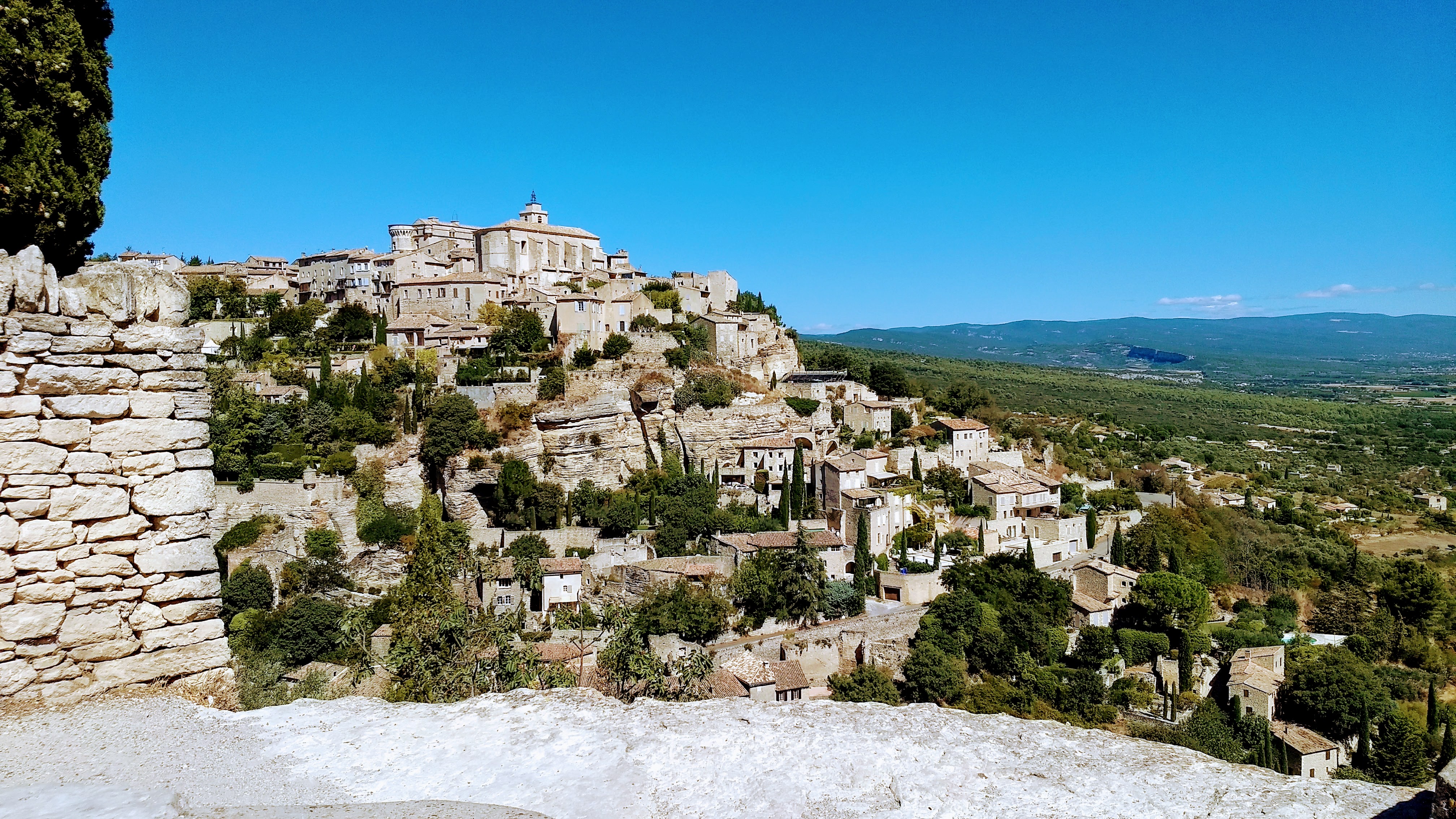
Merci pour les belles explications et photos….C est quoi ton coup de coeur dans les plus beaux villages…..Pierre
Difficile à choisir!!